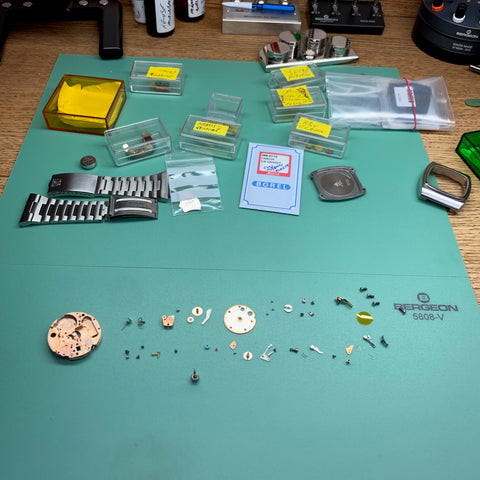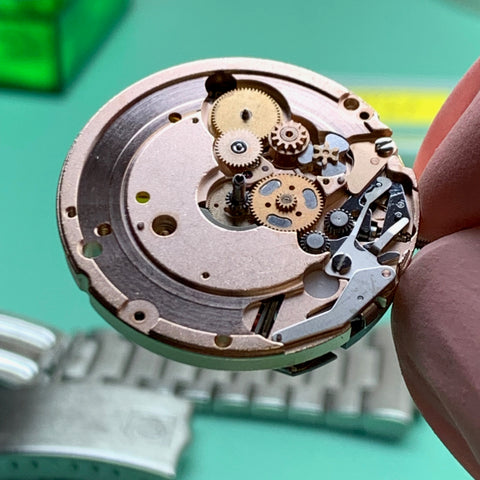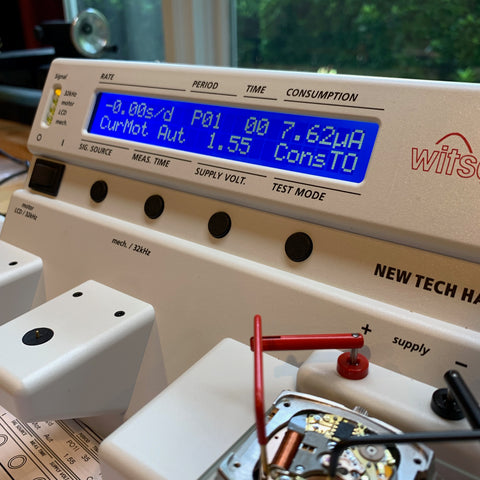I recently serviced two Omega Megaquartz calibre 1310 watches for a ClockSavant customer. The calibre 1310 was Omega's first quartz movement and was the result of significant work and focus by the company to address the quartz crisis. Robust and superbly accurate like every Omega from this era, the watch is a workhorse and can run exceptionally well if properly serviced almost 50 years later. As with all quality quartz watches, they need to be serviced regularly, battery changes aren't enough. When not, quartz watches will more rapidly consume batteries and can become inaccurate and unstable. Both of these watches exhibited various issues prior to servicing and both were very inaccurate for a quartz watch, each one gaining over 1 second a day. After servicing, one is nearly dead-on and the other within about 4.5 seconds a month. Improving accuracy is not just a matter of proper servicing but also careful and tedious tuning the electronics (trimmer) on these watches while monitoring for both accuracy and current consumption under various operating conditions. These were designed for extreme accuracy with a stop seconds function (top recessed pusher.) This calibre also relies on an unusual co-dependent friction between the dial-side minute wheel and cannon pinion for the second crown position jump hour setting-- this allows just the hour to move and not the minute hand. This is effectively a quickset mechanism for the day and also allows rapid time zone changes. Several of the parts are not intended to be cleaned or lubricated after servicing. I have devised an approach to clean at least one regardless as it freezes if not cleaned and lubricated and the results are good. These are charming vintage watches with their TV case design, red Omega logo on the dial, stick hands, and classic Omega quality. I like this particular calibre myself and have one in my personal collection as well.










